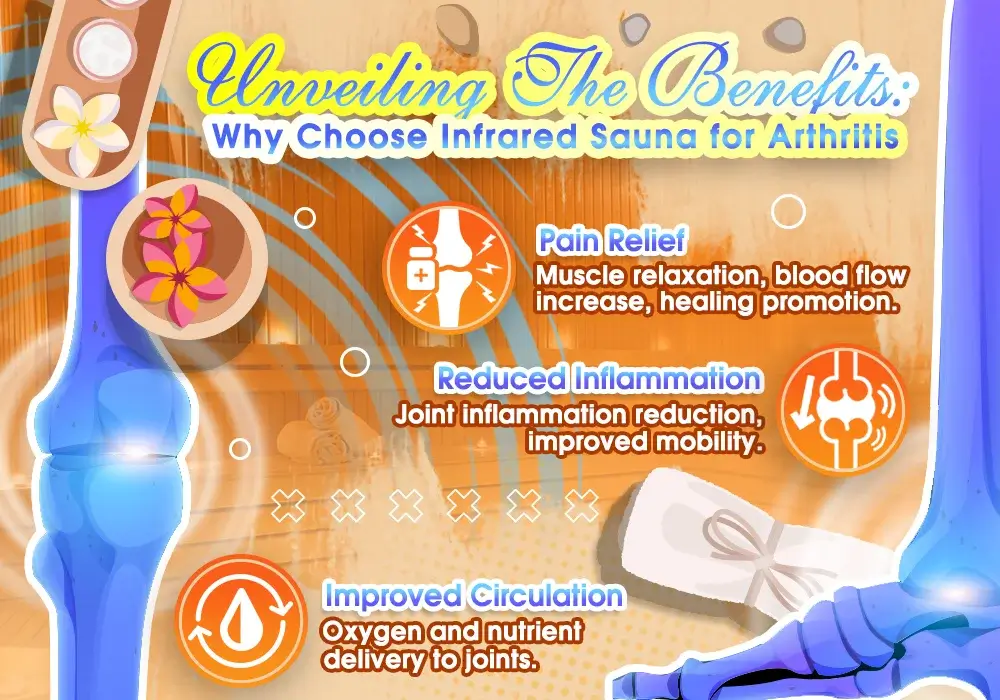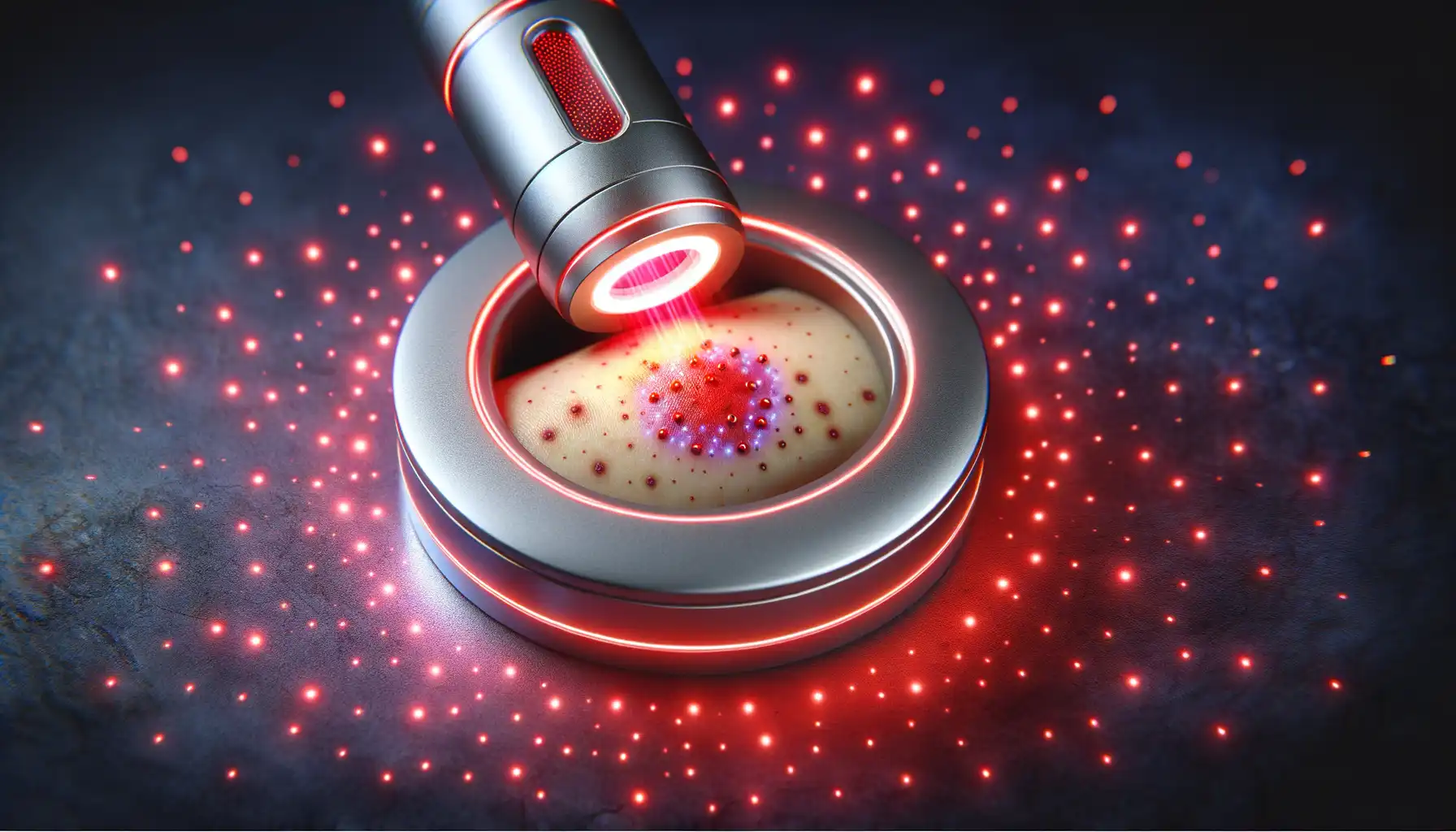Let's talk about it. This isn't about magic cures, but about exploring a tool that many people find incredibly helpful for managing inflammation and pain. We'll look at what the science says about infrared sauna for arthritis, how it works, and how you can safely incorporate it into your overall wellness routine.
Understanding Arthritis: More Than Just Joint Pain
Before we dive into the heat, let's quickly touch on what's happening in the body. Arthritis isn't a single disease; it's a term for joint inflammation, and it comes in over 100 different forms. The two most common types are:
Osteoarthritis (OA): Often called "wear and tear" arthritis, OA happens when the protective cartilage that cushions the ends of your bones wears down over time. This leads to pain, stiffness, and bone-on-bone friction.
Rheumatoid Arthritis (RA): This is an autoimmune disease, meaning your immune system mistakenly attacks the lining of your joints (the synovium). This attack causes chronic inflammation that can lead to joint damage, pain, and swelling.
While they have different causes, both OA and RA share two big problems: inflammation and pain. Managing these is key to improving your quality of life, and that's where infrared heat therapy comes into the picture.
What Is an Infrared Sauna and How Is It Different?
You've probably heard of traditional saunas—the ones with hot rocks and steam that heat the air around you to a sizzling temperature. They make you sweat by heating the room, which in turn heats your body.
An infrared sauna works differently. Instead of heating the air, it uses special lamps to emit infrared light waves. This light penetrates your skin and heats your body directly from the inside out. Think of it like the difference between sitting in a hot, stuffy room versus feeling the gentle warmth of the sun on your skin.
Because it heats you directly, an infrared sauna can operate at a lower, more comfortable temperature (usually 120-150°F) compared to a traditional sauna (150-195°F). This makes it more tolerable for people who find the intense heat of traditional saunas overwhelming.
Near vs. Far Infrared
You might see saunas advertised as "near," "far," or "full-spectrum." These terms refer to the length of the infrared waves they produce:
Near-Infrared (NIR): These are shorter waves that penetrate just below the skin's surface. They are often associated with skin health and surface-level tissue repair.
Far-Infrared (FIR): These are longer waves that can penetrate deeper into the body's tissues, muscles, and joints. For arthritis pain, far-infrared is the star of the show, as it’s believed to deliver heat where you need it most.
Most therapeutic saunas you'll find for joint pain focus on far-infrared technology.
How Infrared Therapy for Joint Pain Might Work
So, how does this deep, gentle heat translate into relief for aching joints? The benefits of an infrared sauna for arthritis are thought to come from a few key mechanisms.
1. Boosting Circulation
When far-infrared heat penetrates your muscles and joints, your body responds by increasing blood flow to those areas. This is a big deal. Improved circulation delivers more oxygen-rich blood and vital nutrients to your tissues, which can help repair damage and reduce inflammation. At the same time, this enhanced blood flow helps carry away metabolic waste products that can contribute to pain and stiffness. It's like opening up the highways to get healing supplies in and cellular garbage out.
2. Reducing Stiffness and Increasing Flexibility
Have you ever noticed how your joints feel stiffer in the morning or in the cold? Heat helps things move better. The deep warmth of an infrared sauna session helps relax muscles, tendons, and ligaments around your arthritic joints. Research has shown that infrared heat therapy can help decrease joint stiffness. A study published in the journal Clinical Rheumatology found that patients with rheumatoid arthritis and ankylosing spondylitis experienced a significant reduction in pain and stiffness after four weeks of infrared sauna treatments. You may find that after a session, your range of motion improves, making it easier to move with less discomfort.
3. Lowering Inflammation
Chronic inflammation is the root cause of pain and joint damage in many forms of arthritis. While more research is needed, some evidence suggests that infrared therapy might help regulate the body's inflammatory response. By increasing circulation and potentially influencing cellular processes, infrared heat may help lower levels of pro-inflammatory cytokines—the proteins that signal your body to create inflammation.
4. Calming Your Nerves and Your Mind
Pain is a complex signal interpreted by your brain. Infrared therapy may help provide relief by directly calming your peripheral nerves. The gentle warmth can feel soothing and may help "distract" the brain from pain signals.
Furthermore, sitting in a quiet, warm sauna is an incredibly relaxing experience. This stress reduction is more than just a feeling; it lowers cortisol levels. Since stress is a known trigger for arthritis flare-ups, managing it is a crucial part of any arthritis care plan. Better stress management often leads to better pain control.
Who Should Use an Infrared Sauna (and Who Should Be Cautious)?
Infrared sauna therapy can be a fantastic tool for many people with osteoarthritis and rheumatoid arthritis who are looking for non-pharmacological ways to manage their pain. If you struggle with chronic stiffness, muscle soreness, and joint aches, you may find significant relief.
However, it's not for everyone. It’s essential to speak with your doctor before starting, especially if you have:
Cardiovascular Conditions: While some studies suggest benefits, the heat does put stress on your heart. If you have unstable angina, recent heart attack, or severe aortic stenosis, you should avoid saunas. Check out this overview on sauna safety from Harvard Medical School for more details.
Pregnancy: Saunas are generally not recommended during pregnancy due to the risk of overheating.
Certain Medications: Some medications can impair your body's ability to sweat or can cause you to become dizzy with heat.
Acute Joint Injury: If your joint is currently red, hot, and severely swollen from an acute injury, applying intense heat is not a good idea. Ice is your friend here.
Heat Insensitivity or Neuropathy: If you have a condition that reduces your ability to feel heat, you could burn yourself without realizing it.
Your Guide to a Safe and Effective Sauna Session
Ready to give it a try? Following a few practical guidelines will help you get the most out of your sessions safely.
Session Length and Frequency
Start Slow: If you're new to infrared saunas, begin with shorter sessions of 10-15 minutes.
Build Up Gradually: As your body adapts, you can work your way up to 20-30 minutes per session. Most people find this is the sweet spot.
Listen to Your Body: Don't push it. If you feel dizzy, lightheaded, or unwell, end your session immediately.
Frequency: Many people find that 2-3 sessions per week provide consistent relief.
Temperature
Start at a lower temperature, around 120°F (50°C). You can gradually increase it to about 140°F (60°C) as you get comfortable. Remember, with infrared, more heat doesn't necessarily mean more benefits.
Hydration is Key
Before: Drink a large glass of water before you get in. You're going to sweat, and you need to be well-hydrated.
After: Replenish the fluids you lost by drinking plenty of water afterward. Consider adding some electrolytes, especially if you had a long or intense session.
Create a Routine
Pre-Sauna: Take a warm shower beforehand. This can help open up your pores and start the relaxation process.
Post-Sauna: Allow for a cool-down period. Some people prefer a lukewarm or cool shower afterward to close their pores and feel refreshed. Rest for at least 10 minutes before going about your day.

Integrating Infrared Sauna into Your Arthritis Management Plan
An infrared sauna is a powerful tool, but it's just one piece of the puzzle. The best results come when you combine it with a comprehensive approach to managing your arthritis.
Think of it as a way to enhance your other efforts:
Movement and Exercise: Using the sauna before a gentle stretching or strength-training session can be a game-changer. The warmth helps loosen up your joints, making movement less painful and more effective. The CDC emphasizes that physical activity is one of the best things you can do for arthritis.
Anti-Inflammatory Lifestyle: Sauna benefits are amplified when you're also eating an anti-inflammatory diet, prioritizing sleep, and managing stress.
Medical Care: Always keep your doctor in the loop. Infrared therapy should complement, not replace, the medical treatments prescribed by your healthcare team. The National Institute of Arthritis and Musculoskeletal and Skin Diseases is an excellent resource for evidence-based medical information.
The Takeaway
Living with arthritis requires a proactive and multifaceted approach. While there's no single cure, infrared sauna therapy offers a promising, non-invasive way to manage some of its most challenging symptoms: pain, stiffness, and inflammation. By warming your joints from the inside out, it can improve circulation, increase flexibility, and provide a deep sense of relaxation.
Remember to start slowly, listen to your body, and talk with your doctor to make sure it's a safe option for you. When used as part of a complete wellness strategy, a regular infrared sauna routine could become one of your favorite and most effective tools for reclaiming your comfort and mobility.



